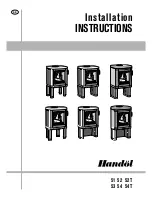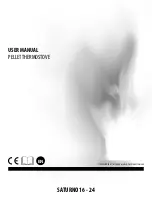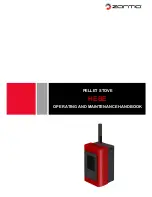
7
Fire stops must be installed at spaces where the chimney passes through floors and/or
ceilings.
The RAIS 60 Insert is approved for installation in a masonry fireplace or a metal firebox
(heat exchanger) within a masonry chimney (based on UL 907 listing) or for use in an
approved factory-built zero-clearance fireplace (listed to UL 127).
When installing into a masonry opening, it is suggested that you wrap the insert with
fiberglass or other non-combustible insulation for better heat retention.
There are several factory-built fireplaces that can be used with the RAIS 60 Insert. The
clearance requirement is that there be a 2” (5cm) space between the insert and the back
and sidewalls of the box.
To fit the insert into the zero-clearance firebox, the following items may be removed:
damper, ember catches, fire grate, doors, and viewing screen or curtains. The smoke shelf
or baffle can also be removed if done without cutting the material or permanently altering
the fireplace structure.
Operating instructions
First Fire
Your new RAIS should be broken in gently for top performance and to prevent paint
damage, cracks in the firebrick or firebox lining, and excessive wear and tear.
Start with a small fire (never overload the firebox) to allow the materials to get
accustomed to the higher temperatures,
and then gradually increase the intensity. Use up to a maximum of 2 logs.
For the first few fires you may detect a strange smell that comes from "heat treating" the
paint and materials. This is normal and will soon disappear. Just insure there is plenty of
fresh air in the room!
Furthermore, during the initial heating up and cooling down, some "click-sounds" may
occur from the metals being exposed to the large differences in temperature. This is
normal.
For wood to burn correctly, the right amount of air has to be supplied at the right
time and places.
Primary air is defined as combustion air for burning the “mass of wood" and stimulates
production of volatile gases.
Secondary air is used to burn off the gases at high temperatures (above 1,000°F (540°C))
and to keep the glass free of soot.






























